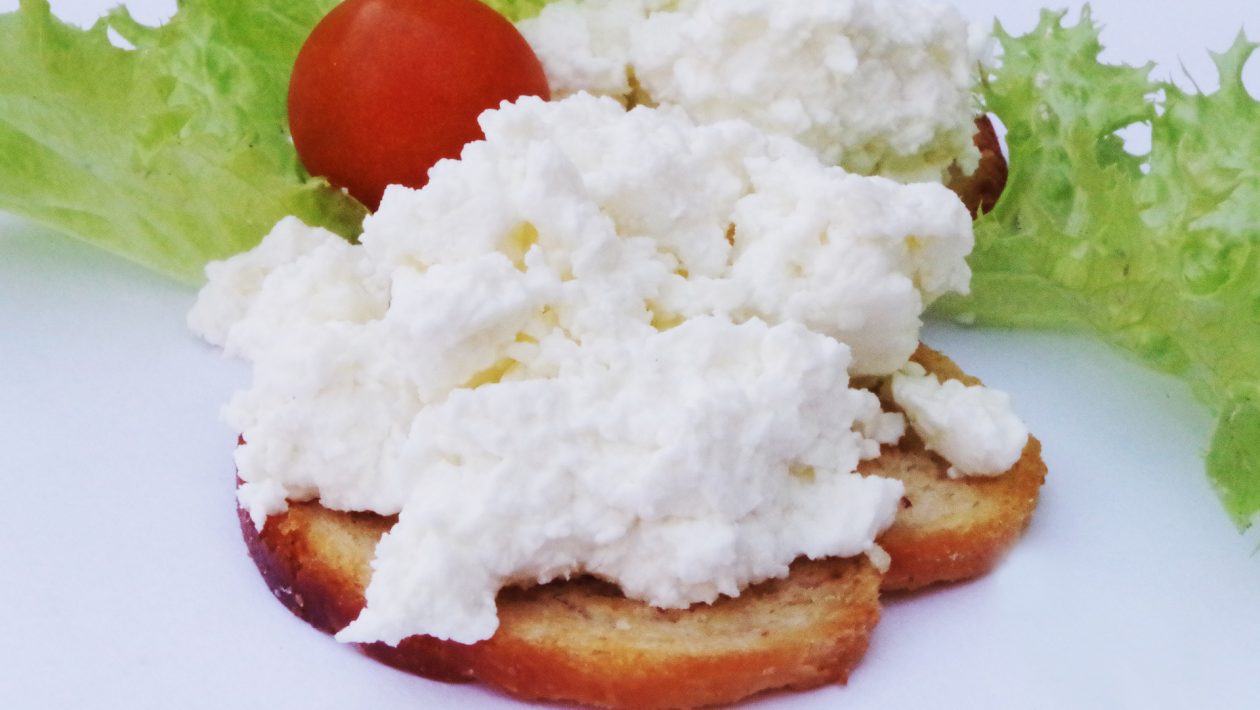You might find it a little hard to grasp the idea of bacteria being useful to your body and health. Doctors often recommend antibiotics to get rid of bacteria that has caused infection in your system. Even you have been using antibacterial body creams and soaps all this time to keep yourself away from bacterial infections. Thus, what are probiotics then? Are probiotics useful for your body?
When a wrong bacterium invades your body at the wrong place, you land up in several health complications. However, what about the right bacterium natural digestive enzymes? When the right bacterium resides in the right place in your biological system, there is no harm in it. Probiotics play the exact same role in your body. From next time before asking yourself- what are probiotics, know that they are the right bacteria for your system.
Probiotics refer to living microorganisms with the potential to aid in curing several illnesses, as well as prevent their onset. Scientists have extensively studied the importance of probiotics in providing a healthy environment inside your digestive tract and immune system.
So what are probiotics? Probiotics are your friend, healthy and good bacteria who only want you to stay healthy and safe from various diseases. You will mostly find probiotics in foods, dietary supplements, and various beverages.
Table of Contents
How was probiotics discovered?
There is an interesting history behind the discovery of the word ‘probiotic’. If you divide the word probiotic into two parts, you will get the words ‘pro’ and ‘biotic’. According to Greek literature, the term ‘pro’ stands for promoting and ‘biotic’ stands for life. If the question pops up in your mind as what are probiotics, they are life-promoting or enriching microbiota.
Elie Metchnikoff brought probiotics into the picture in the early phase of the twentieth century. Then onwards he became the ‘father of probiotics’, post the discovery of probiotics in Bulgaria. He observed that the rural elderly population in Bulgaria were leading a healthy lifestyle, despite extremities in climate and poverty.
Metchnikoff started analyzing the cause behind the same only to theorize that intestinal microbiota was responsible for delay in senility. He predicted that the microbiome in the intestine was mostly bacteria present in sour milk, which were behaving as host-friendly.
Since the discovery of probiotics, many scientists have further researched the theories of Metchnikoff only to find more benefits. Several findings in the current scientific world support the fact that probiotics are actually extremely beneficial for human wellbeing.
Interesting facts about probiotics
In 2013, ISAPP (International Scientific Association for Probiotics and Prebiotics) planned a gathering to reevaluate concepts and theories behind probiotics. Various researchers and experts from the clinical background were guests in this meet, including specialties from various departments like-
- Gastroenterology
- Gut microbiota
- Pediatrics
- Microbial genetics
- Food science
- Immunology
- Family medicine
- Probiotic bacteria microbiological studies
The experts from the meet concluded that probiotics are live microbial agents with an ability to confer various health benefits. However, there is a tricky condition to getting health benefits. You need to administer probiotics in optimum quantities only- not more, not less.
There is a slight difference between active or live cultures and products with probiotics in them. How to distinguish between the two types? Given below are some pointers to help you understand whether you are looking at a live culture or a probiotic:
Criteria for active cultures
- There is no need for true evidence or research to support or make a claim of any sort.
- Live cultures may include any fermented food products with microbes in them.
- Check for the viability proof at the lowest level that mirrors any specific level observed in fermented foods. The typical viability proof of fermented products reflects approximately 1 x 109 CFU (colony forming unit) in each serving.
Criteria for probiotic products with no claim of health concerns-
- Considered as a beneficial member or member of a harmless species, with adequate evidence of general values on human health. Probiotics are safe species in the microbiome with proven health benefits because of their structure, end product, or overall activity.
- Examine the viability proof at the optimum level to support human beneficial studies.
Probiotic pointers for products with health claims-
- Properly defined strains of probiotics present in the product.
- Evidences required for convincing the usefulness of the specific strain, or a combination of various strains linked to definite health indications.
- Proof of viable probiotic strains effectual levels towards the shelf life end.
How is prebiotics different from probiotics?
As the name suggests, prebiotics come prior to probiotics and help the latter to work effectively within your body. The effects of both prebiotics and probiotics give you synbiotics, a synergistic result of the combined effort. Therefore, what are probiotics and prebiotics doing together? Both are combining to form a synergistic effect, which helps to feed the bacteria living in the gut.
Prebiotics are carbohydrates that you cannot digest normally. Thus, prebiotics becomes the food for your gut bacteria and probiotics. Prebiotics efficiently triggers selective growth and functionality of gut microbiota, conferring several health benefits to your body (the host).
What are the general benefits of prebiotics?
- Solving digestive issues like IBD (inflammatory bowel disease), constipation, and enteritis.
- Treating NAFLD or non-alcoholic fatty liver disease.
- Reducing inflammation against allergic responses.
- Preventing and treating different classes of cancers.
- Fighting disorders that bring down your overall immunity level.
Various studies have also shown that prebiotics present in different types of dietary food products can offer a few special benefits. In adolescents as well as post-menopausal females, prebiotic effects can considerably-
- Increase the mineral density in your bones
- Enhance absorption and accretion of calcium during puberty
In several experimental studies in humans, prebiotics and probiotics together can influence the following benefits as well-
- Treating type 2 diabetes and obesity
- Regulation of hunger levels and satiety
- Homeostasis of overall body energy
- Gaining bodyweight depending on the dose of probiotics
Other facts about probiotics
Most probiotics come under the class of oligosaccharides, which means they have limited monosaccharide units in their structure. Digestive enzymes that are present inside your body cannot break down the monosaccharides. Due to resistance to digestive enzymes, probiotics can easily cross the upper gastrointestinal system devoid of any breakdown.
The fermentation of probiotics first happens in the lower part of the colon, yielding several short fatty acid chains. The resulting fatty acids act as nourishment for the internal microbiota residing in the digestive tract.
You can get oligosaccharides from various natural sources including banana, asparagus, milk, barley, garlic, soybean, chicory, sugar beet, and artichoke. Other oligosaccharide sources are rye, bamboo shoots, lentils, yacon, sugarcane juice, honey, tomato, leeks, onions, mustards, and wheat.
What are probiotics or other microbiome doing inside your stomach? What the role of gut microbiota in securing your health? There are more than billions of microbes existing in your digestive tract. The gut microbiota is responsible for making up to one to three percent of your total body mass.
Microbial community in your body can result in various benefits related to your wellbeing. Human Microbiome Project or HMP is working under the sponsorship of the NIH (National Institute of Health). HMP is establishing research studies on human microbiota, which includes the beneficial aspects of probiotics in the following fields:
- Gut microbiome role in esophageal cancer, ulcerative colitis, and Crohn’s disease.
- Skin microbiome role in immunodeficiency, atopic dermatitis, and psoriasis.
- Urogenital microbiome role in circumcision (removing the foreskin from the penis of humans), and determination of sexual and reproduction history. Other applications include inflammation of the intestine, necrotizing enterocolitis, and abdominal pain in infants.
Necrotizing enterocolitis is a serious disorder in premature children where tissues inside the intestine die because of oxygen deficiency.
What are the different categories of probiotics?
When you are studying what are probiotics, you should also know their classification for better understanding. Dietary supplements, beverages, and foods with probiotics in them usually constitute of bacteria or yeasts. Initially in the 1960s, scientists only knew about four probiotic bacteria that includes E. coli, Lactobacilli, Clostridia, and Enterococci.
Later due to the advancement in technology, various other classes of probiotics came under the invention. The activity of the probiotics in the gut determines which health benefits to promote within your body. The various kinds of probiotics along with their genus specifications and roles are as follows:
Lactobacillus
If you sit to count the number of Lactobacillus species, there are over 50 of them. You will normally find their existence inside your genital, urinary, and digestive tracts. Fermented foods like yogurt and certain dietary supplements contain lactobacilli. Lactobacillus finds its usage in the treatment and prevention of a broad spectrum of diseases and health conditions.
Certain Lactobacillus strains that you will easily get in dietary foods are Lactobacillus reuteri, Lactobacillus bulgaricus, and Lactobacillus acidophilus. Other strains include Lactobacillus planterium, Lactobacillus acidophilus DDS-1, Lactobacillus johnsonii, Lactobacillus rhamnosus GG, Lactobacillus salverius, Lactobacillus gasseri and Lactobacillus casei.
Different studies have proven that lactobacilli strains can be helpful in the prevention and cure of-
- UTI (urinary tract infection)
- Bacterial vaginosis
- Inflammatory bowel disease
- Traveler’s diarrhea
- Diarrhea due to Clostridium difficile infection
- Antibiotic associated diarrhea
- Skin problems like canker sores, fever blisters, acne and eczema
- Respiratory infections
- Lactose intolerance
Enterococcus faecium
You will find this probiotic bacterium in your gastrointestinal tract, quite nicely flourishing.
Streptococcus thermophilus
This bacterial strain is responsible for producing a large amount of lactase enzyme, which makes it efficient in preventing resolving lactose intolerance.
Leuconostoc
To your surprise, the use of Leuconostoc strains goes back in the old times mostly in food processing. You can use both the dead and live forms of the bacteria, as well as its metabolites as probiotics.
Types of probiotics
Here are some more types of probiotics:
Bifidobacteria
There are almost 30 serotypes of bifidobacteria residing inside your colon. These healthy bacteria start appearing in your intestinal tract right after your birth, mostly in breastfed children. The presence of bifidobacteria in your gut is a sign of a healthy digestive tract and gastrointestinal health.
Strains of bifidobacteria include Bifidobacterium lactis, Bifidobacterium breve, Bifidobacterium bifidum, Bifidobacterium thermophilum, Bifidobacterium pseudolongum, Bifidobacterium infants, and Bifidobacterium longum.
Benefits of bifidobacteria are
- Improvement in glucose tolerance and blood lipid levels
- Effective alleviation of irritable bowel syndrome (IBS). Bifidobacteria improves possible IBS signs like abdominal discomfort or pain, urgency, digestive disorders and bloating.
Saccharomyces boulardii
It is the only probiotic belonging to the category of yeasts. Certain studies reveal the potency of S. boulardii in treating and averting diarrhoea symptoms due to antibiotics or travelling. S. boulardii also helps in preventing recurrence of C. difficile, treats acne, and reduce negative effects of H. pylori treatment.
Foods that naturally contain probiotics
Here is some food that is probiotics naturally:
Yogurt
It is an excellent natural source of probiotics, containing Bifidobacterium bifidum, Lactobacillus acidophilus, and Lactobacillus bulgaricus. Eating yogurt can give you many positive impacts on your gut microbiome, reducing potential risks of gastrointestinal disorders.
Kimchi
It is a type of fermented vegetable, which you mostly eat in the form of a salad. You make kimchi salad using Chinese cabbage (beachu), red pepper powder, radish, ginger, green onion, garlic, and jeotgal (fermented seafood). Probiotic bacteria that are present in kimchi include Lactobacillus brevis, Lactobacillus planterum, Lactobacillus curvatus, Lactobacillus gasicomitatum and Lactobacillus mesenteroids.
Other common strains in kimchi are Lactobacillus sakei, Lactobacillus citreum, Lactobacillus lactis, Weisella confusa, Weisella koreensis and Pediococcus pentosaceus.
What are the potential benefits?
Yogurt probiotics can improve problems related to lactose intolerance (mostly in infants), cardiovascular risks, and type 2 diabetes. Other benefits include relief from allergic reactions, enhanced dental health, prevent respiratory disorders, improved bone density, and overall bone health.
Probiotics in kimchi can act as anti-cancerous agents, resolve obesity, promote colon health, alleviate constipation, and reduce bad cholesterol levels. Kimchi probiotics contain many antioxidants along with antiaging properties, improves brain health and immunity, as well as skin health.
Precaution tips
Discontinue taking probiotics if you feel any discomfort in digestion within the initial few days. Do not take probiotics with compromised immunity.





